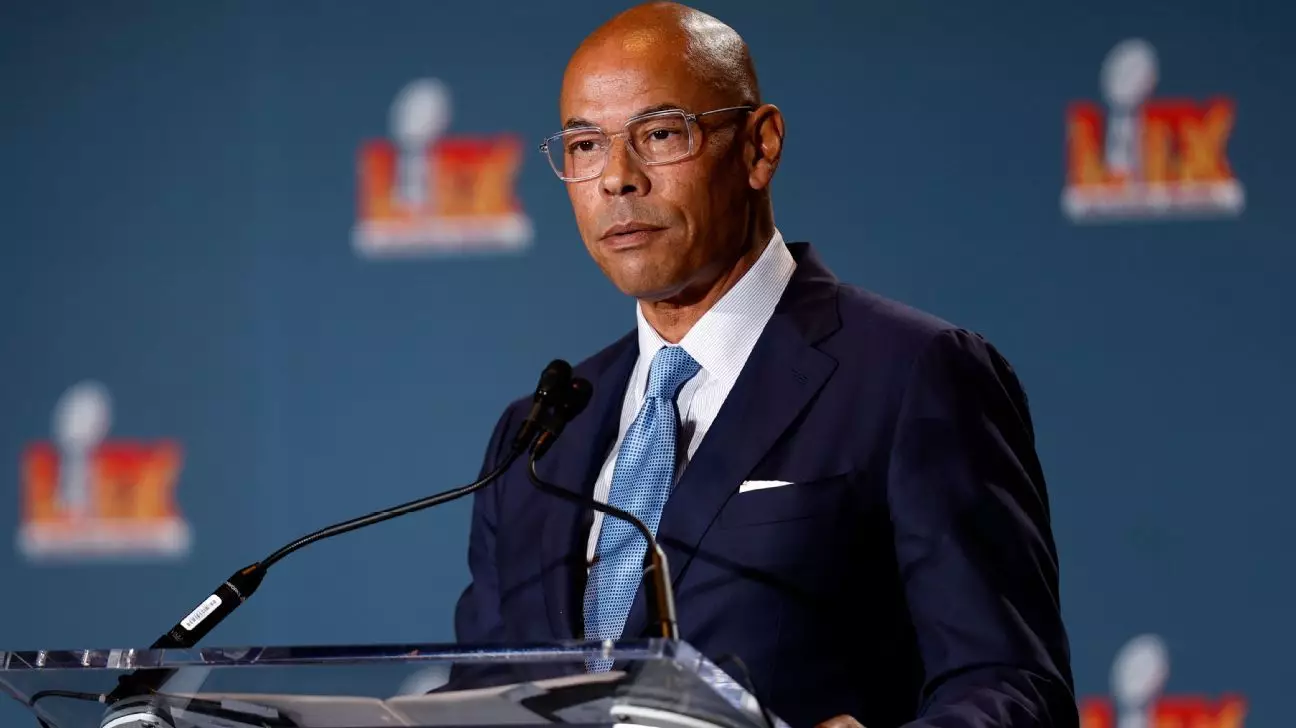In recent months, the NFL Players Association (NFLPA) has found itself embroiled in a shadowy struggle over leadership credibility and internal cohesion. At the heart of the controversy is the union’s executive director, Lloyd Howell Jr., whose recent activities and the union’s response to reports about him showcase the fragile state of trust within one of the most influential player organizations in professional sports. While the NFLPA publicly emphasizes unity and dedication to players’ best interests, the underlying discord suggests that the union is grappling with systemic issues that threaten its core mission. Far from a smooth governance process, it appears that behind closed doors, questions of transparency, conflicts of interest, and leadership accountability are threatening the very fabric of union solidarity.
The NFLPA’s executive committee issued a statement vehemently denying any call for Howe’s resignation amid reports that he maintains a side gig working as a paid consultant for the Carlyle Group, a private equity firm eyeing NFL franchises for minority ownership. Such activities present a clear conflict of interest, raising questions about whether the union’s leadership is truly acting in the best interest of players or merely safeguarding personal and corporate alliances. For union members and observers alike, this situation exposes a troubling disconnect between public declarations of unity and the murky realities of internal power dynamics. The committee’s insistence that they have not questioned Howe’s leadership, while simultaneously investigating conflicting reports, suggests perhaps a defensive posture more than transparency or accountability.
The Power Play Behind Confidentiality and its Political Ramifications
A critical element fueling the controversy is the use of confidentiality agreements that have kept vital information from players and the public. The recent arbitration ruling involving league executives and guaranteed player compensation was hidden behind a strict confidentiality clause. This secrecy serves as a stark reminder of the union’s struggle to maintain control over sensitive information, often at the expense of transparency. When union members are kept in the dark about arbitration outcomes that could influence their collective bargaining, it risks eroding trust and fostering suspicions that internal interests are being protected at their expense.
The arbitration decision—focused on league misconduct but ultimately dismissing collusion claims—has political and legal implications for the NFLPA. By choosing to appeal, the union demonstrates a willingness to challenge the league’s narrative, but the decision to withhold the arbitration details from players signals a broader issue: the lack of open dialogue and accountability that any effective union must uphold. Without clear communication, the union’s credibility becomes vulnerable, especially when internal conflicts threaten to overshadow its primary mission — advocating fiercely for players’ rights.
The Leadership’s Dilemma and the Future of the Union
Adding to the complexity is Howell’s recent hiring of Ronald C. Machen, a prominent lawyer, to review his activities, signaling that serious questions are being addressed from within. However, such internal reviews often come across as window dressing when union members see little tangible change in leadership accountability. The fact that Howell’s activities—particularly his dual role with Carlyle—are being scrutinized, shows an awakening among players who demand transparency and integrity from those representing their interests.
Furthermore, the internal factional tensions are intensified by allegations that league officials and owners may have undertaken coordinated actions to suppress player benefits, such as guaranteed contracts. The arbitration report reveals that the league’s executive actions may have been more calculated than previously understood, shining a light on the systemic issues that plague the NFL’s business practices. Yet, the union’s decision to declassify this information publicly, especially through a contentious appeal, highlights a strategic shift toward confrontation rather than cooperation. Whether this approach will ultimately unify or further divide the union remains to be seen.
—
The NFLPA’s current situation exemplifies the larger challenge faced by organizations tasked with representing powerful interests—balancing internal power struggles with external advocacy. While public statements aim to project strength and unity, the underlying fissures threaten to undermine the union’s legitimacy and effectiveness. For the players, who rely on the NFLPA to secure their rights and futures, these internal conflicts are more than mere politics; they are a test of whether the union can evolve into a truly transparent and accountable organization or succumb to the very obstacles it seeks to combat.


Leave a Reply